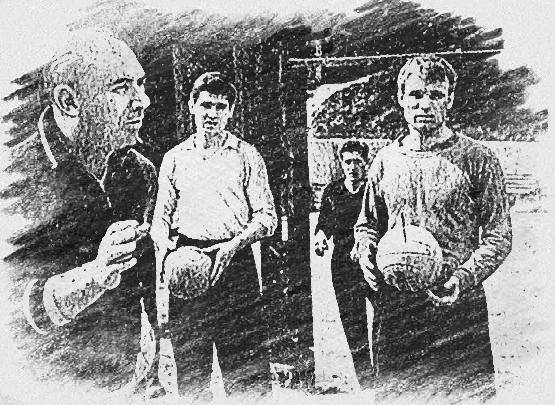
Non-League Legends: Total Football = Total Training
When I set out to recreate Maslov’s style of football with Notts County, it started as a long-term project of developing an effectively simple 4-4-2. I was looking for a formation that could be successful in both lower leagues and the elite ones. For this to work the concepts of intense pressing, strategic possession and constant ball movement had to be central as they were essential in Viktor Maslov’s own tactics. In many ways, Maslov’s tactical ideas contained quite a bit of what later became known as Total Football. Totaalvoetbal might have developed simultaneously at Ajax but its similar focus on pressing and constant movement was unmistakable. As they say, there’s more than one road to victory, and more than tactics make Total Football. You’ll need Total Training to recreate this style in FM21. Total Football Training.
From Maslov to CR7
Few still remember today that both Gegenpressing and Total Football can chart their origin to the theories of Viktor Maslov and the style of football he implemented with Dynamo Kyiv in 1960s. Both of these famous styles are associated with modern football. And this probably makes Maslov into the father of the modern game. Or “Grandad” to be more precise as the Soviet coach was often affectionately called by his players. The nickname stuck with him possibly because of how he looked, being balding and pudgy. But Jonathan Wilson probably hit at the heart of it when he wrote that the “main reason for the name was his [Maslov] colossal wisdom, humanity and kindness”.
This wisdom and humanity not only permeated “Grandad’s” tactics but also how he treated players on and off the field. Viktor Maslov’s teams worked well in unison because he gave them equal say in major decisions by consulting with them about his tactics. He even famously allowed his captain to overrule his substitution choices. So it is no wonder that his players had full trust in the coach who treated them as equals. According to Maslov the contribution of each player was equally important to the game plan. This stemmed from the collectivist idea that individuals could work together to create something greater than sum of its parts. This might not seem all that innovative today but it was positively revolutionary in the football world of 1950s-60s.
Maslov also modernized the manager’s involvement in other aspects of football, like training. Grandad was a kind taskmaster on the training ground. Quite demanding of his players but not the authoritarian scientist that his disciple Valeriy Lobanovskyi would later become.
Nevertheless Maslov’s intense pressing tactics put supreme strain on the players’ physical and mental endurance. Not surprisingly Maslov stressed intense training to help his players develop the physical and mental attributes required by his style. To help with this he took intense interest in nutrition science and modern conditioning methods. And it bore fruits! Over time his Dynamo side became famous (and feared!) for being physically superior to most of their competition. The era of a professional footballer was just beginning! Something we take for granted today seeing the level of training commitment of some players like Cristiano Ronaldo. But Maslov’s players did it first with their strict diets and full-time fitness training regimes.
Maslov’s Home-grown Fantasista
While his main focus was on physical conditioning, Maslov did not overlook the importance of technique and tactical astuteness. He took a cue from the Brazilian national side of the 1950s and stressed the importance of fostering the development of “luxury players” (fantasistas if you will) like elegant playmakers, a rarity outside of South America at the time. While Brazil had the playmaking genius of Didi and Pele and many others, the Soviet Union could only name two, Dinamo Moscow’s Gennady Gusarov and Andriy Biba at Dynamo Kyiv.
He may not have been a generational talent like Pele, but Andriy Biba was still one of the greatest midfield playmakers that Ukraine (and Eastern Europe in general) has ever produced. And Maslov acknowledged Biba’s talent by giving him the only “free” creative role within the otherwise hard-working, formation. In Dynamo Kiyv, Maslov designated Biba as the creative hub of the team and the only player excused from pressing duties. His main role was to create at will. A kin to the fantasista advanced playmaker within the Italian catenaccio formation of the time.
Describing his favourite player, Maslov beautifully said:
Only Biba retains full rights of democracy. He is a very clever and honest player, who would never allow himself any excess and never abuses his skills. Andriy will do exactly what is necessary. He has the right to construct the game as though he were the coach himself during the match, making decisions as to how to shape it. The others then grasp his ideas and develop them as far as they can.
I never read a better description of a playmaker, or any footballer for that matter.
Do you have a player like that on your team? This is the one on the current Dynamo squad.
The next Andriy Biba? Possibly. Only time will tell.
But sorry for going off on a tangent. Let us get back to the main subject, creating a Maslov-inspired training system in FM21.
Applying it All to The Game
I like to browse the Football Manager official forums. It’s where I get a lot of my ideas and inspirations for my articles. This time it is no different. On the Sports Interactive forum, I often see FM players write that they don’t care about the training side of the game. Or that they rather delegate that part of the game to their assistant manager. And instead they would like to focus on the tactical side. Wait, what?! Because you see this makes no sense to me. Simply put, tactics begin with the training ground. You could spend hours in the tactic creation screen setting up your OIs and individual instructions. But at the end of the day, your training schedule needs to prioritize the attributes suited to your tactical style. And the only way to do this is by taking control of training and choosing the training routines yourself.
Three Pillars of Possession
The three pillars of Possession are Mentality, Overloads and Attributes. To create an effective Possession with Intent tactic, you will need these three elements in place. Firstly, there the team and individual mentality selection. As shown in my last article, it should always be among the first things you consider when creating any tactic. But it is especially important in Total Football and other possession-focused systems. It is simply because passing length and tempo are very important in such tactics. And those are most influenced by your team mentality. Although, it’s very possible to play possession football on attacking team mentality, it requires quite a lot of specific team and individual instructions to modulate the passing and player directness. In the end why do that when you could program the same thing with much less user input?
Secondly, you need to consider where you’ll overload your opponent and take advantage of the resulting gaps (isolate). That is the intent part in a possession tactic. For what is the point of possession when you do not score any goals? I covered this rather extensively in this recent article.
As shown in the article above, overloads are very possible on the flanks with a 4-2-3-1 formation. But there are many other possibilities when using other formations. For instance, you could use a more unorthodox formation like Cruyff’s 3-4-3 to create effective overloads centrally. There you will overload the middle and then create 2v1 isolations on the wings.
Finally, the third and final element in Total Football tactic creation are the attributes of your players. More than other tactical styles, Total Football and possession football in general requires players with a very specific skill-set. All their attributes need to complement their ability to keep hold of the ball and pass it effectively. Essentially, you need players that are least likely to lose the ball possession during transition phase. Regaining the ball is important but it becomes less necessary if you can prevent losing it in the first place. This article will focus on setting up the training to improve the attributes needed for supreme ball control. In a way training has not changed that much in this version. So this guide could be applied effectively to both FM20 and FM21.
My Training Method – Work Hard and Rotate
In FM21 there is no such thing as training too much. And because of FM21’s added focus on squad rotation (due to simulated travel fatigue), maintaining a proper 2nd team is essential. You can no longer get away with a top-heavy team with little depth. What this also means is that training can be maintained at a higher intensity for the whole season. Since you should now have half of your squad not playing matches at any given time. When not playing they can be asked to train harder.
So keeping this in mind, these are the schedules I have been working with.
Schedule for weeks with one match or less, or during late pre-season.
In the preseason, a slightly modified version of this one could be used. Just insert another one or two physical training session into the S1 section of the schedule. Also, it was suggested to me by a friend that as your squad becomes fluent with the tactic, it is a good idea to eventually replace “Match Tactics” session with “Teamwork” one.
Training Schedule for weeks with two matches
Essentially “One Match per week” schedule covers all the major training categories. Thus I can use it for the whole season, including the preseason and mid-season breaks. Basically I try to break up every training day into physical, technical and tactical parts. Your future Total Footballers should be training in these aspects of their skill-set every day, all the time. The aim of my Maslovian training method is to create very well-rounded footballers with especial focus on ball retention and smart attacking movement. This means that I picked all the training sessions that work on the attributes relevant to this.
The primary attributes to train include, First Touch, Passing, Technique, Anticipation, Composure, Decisions, Off The Ball, Teamwork, Vision, Workrate, and Balance.
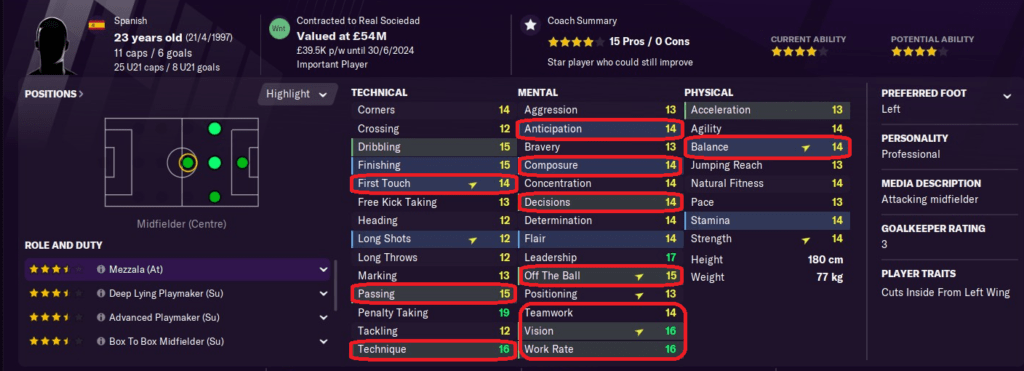
Notts County Example
My first season with Notts County was definitely an interesting one. We managed to win the National League (our media prediction was to finish 2nd). Yet we managed to miss out on a perfect season, due to the unfortunate dip in form towards the end.
I attribute it to the fatigue setting in towards the end of our marathon. So now there is definitely a need for a lot of changes and hard work on the training field, and in the transfer market.
And speaking of a transfer market, after a busy summer break the face of Notts County changed quite dramatically. Examining the squad overview screen, you can now see a much younger team. The time for change has come as the starting season’s older dead weight has been cleared.
While most of the new faces are under 23 years of age, interestingly all of them were born after the last time that Magpies graced the highest level of the English league pyramid. At the time in 1991 it was Division One (currently Championship), the Premier League didn’t exist yet.
The average age of my current squad is 23. It is a very young squad but one which should benefit most from this intense type of training. At the same time, the advantage of playing at a higher level should really boost their development. Also younger players tend to do better with more intense training and develop faster before they reach their mid-twenties. And so far I’ve seen some evidence of this in my other concurrent save with Real Sociedad. There some of my youngsters had significant improvement in their attributes. Sometimes, in less than 3 months.
I have not been using this training long enough with Notts County to see much improvement yet. But I want to show you an example of what this training can do once you run it long enough. I picked one youngster from Sociedad save.
At Sociedad I set the training to alternate between 1Match or 2Match versions, depending on that week’s match congestion. At the time of this screenshot, about three months have passed since starting the training. As you can see in the screen above, Robert Navarro is developing in leaps and bounds. It is always pleasant to see those yellow and green arrows. In three months time, he basically moved from a good U19 player to a capable substitute for the First Team. He is not alone. While a little older, Alexander Isak has also been developing very nicely.
Sidenote – Injuries
There is no discussion of training without injuries. Some of you might look at my training and think that it’s too grueling to maintain for the whole season. Or more importantly what is its effect on injuries? Well to tell you the truth I’ve been surprised by how few injuries we got. You can see in the image below, our actual injuries are about half of expected number. Also the severity of the ones we get is quite mild. The worst being about 3 weeks. In terms of player fatigue, I only had one player, Oyarzabal, getting jaded and consistently complaining. But that is definitely my fault. He is such an essential player in my system that I tend to play him in almost all games. He is our captain as well. Were I to stick more faithfully to rotating the whole squad, then this probably wouldn’t be an issue.
So that is it for now! Why don’t you test out this training system with your own Total Football club. Feel free to make modifications and let me know about it below. If you enjoyed this article, please follow us @ Dictate The Game’s Facebook and Dictate The Game’s Twitter. And here are other articles you might like:

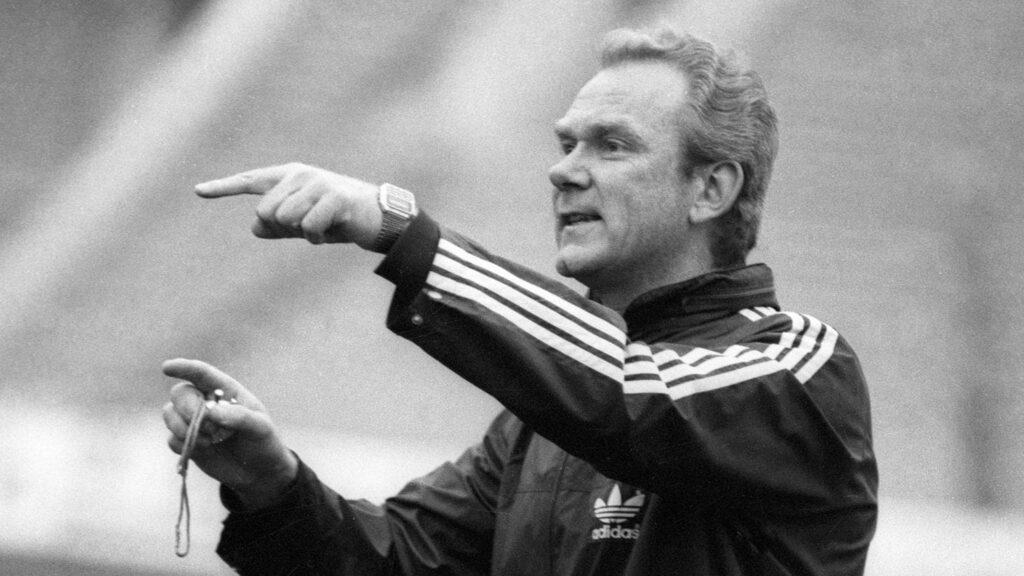
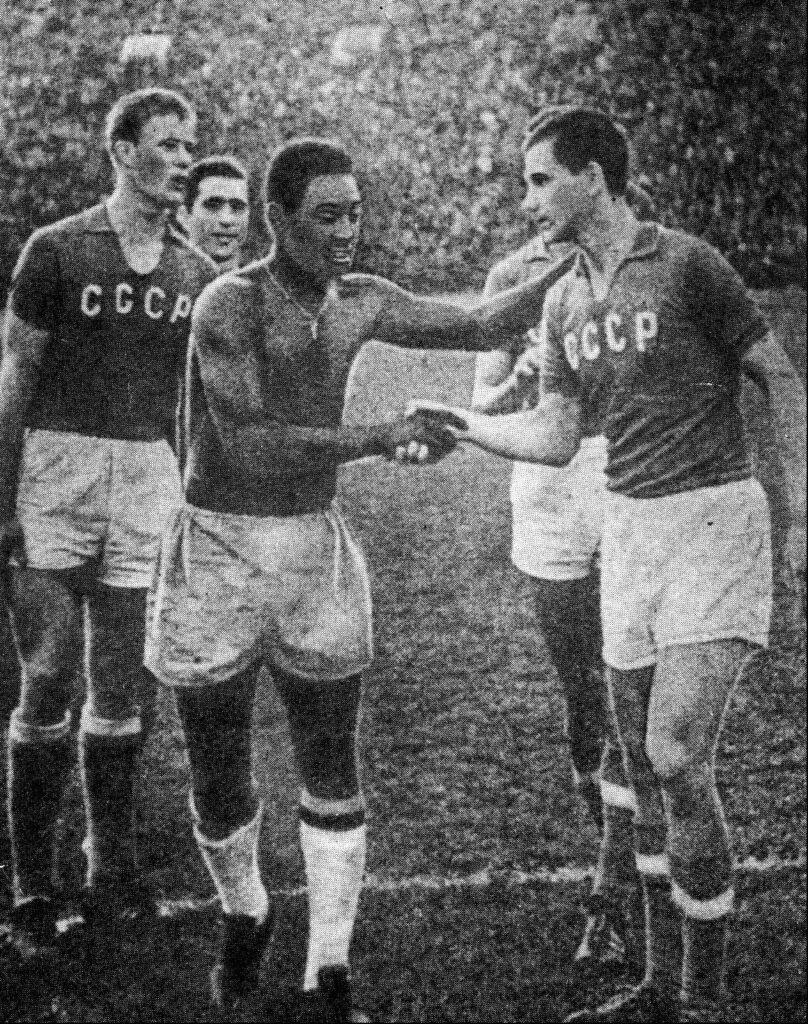
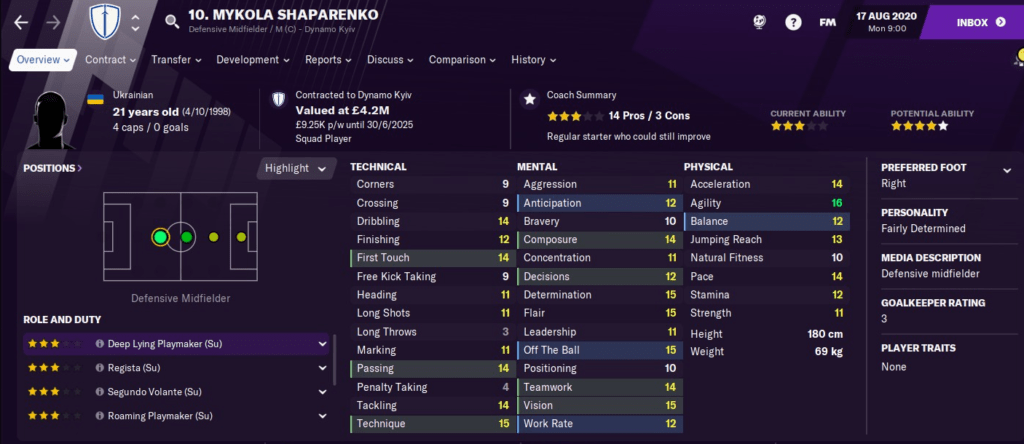
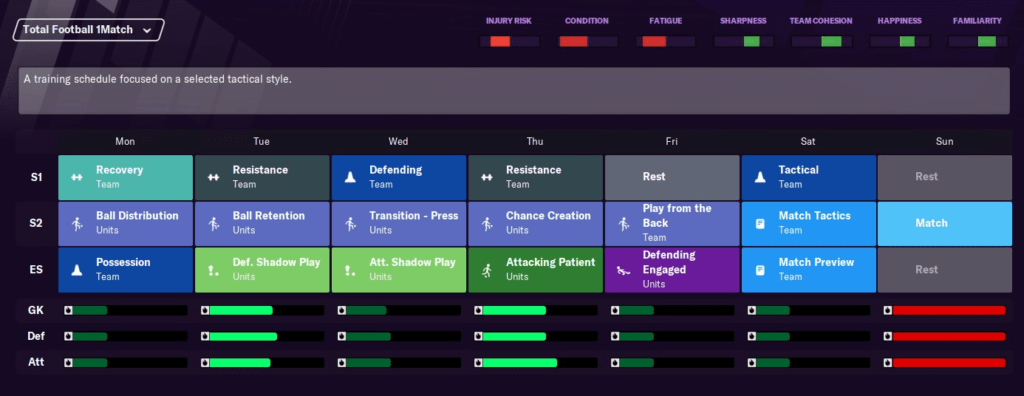
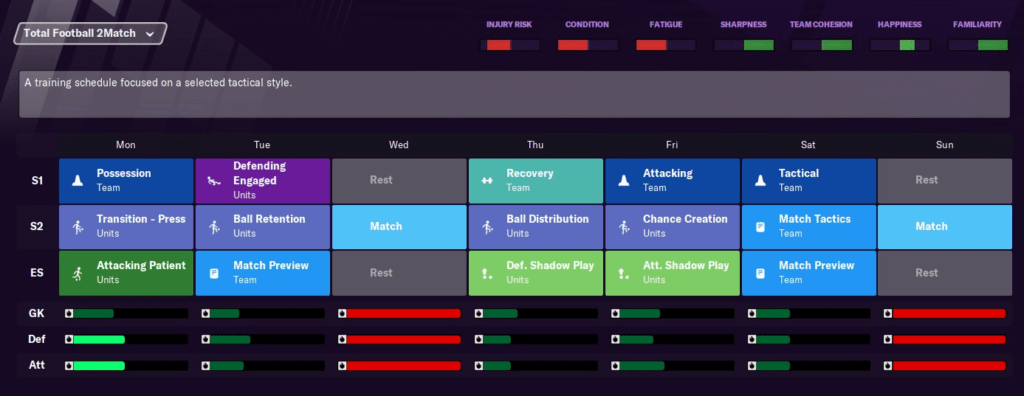
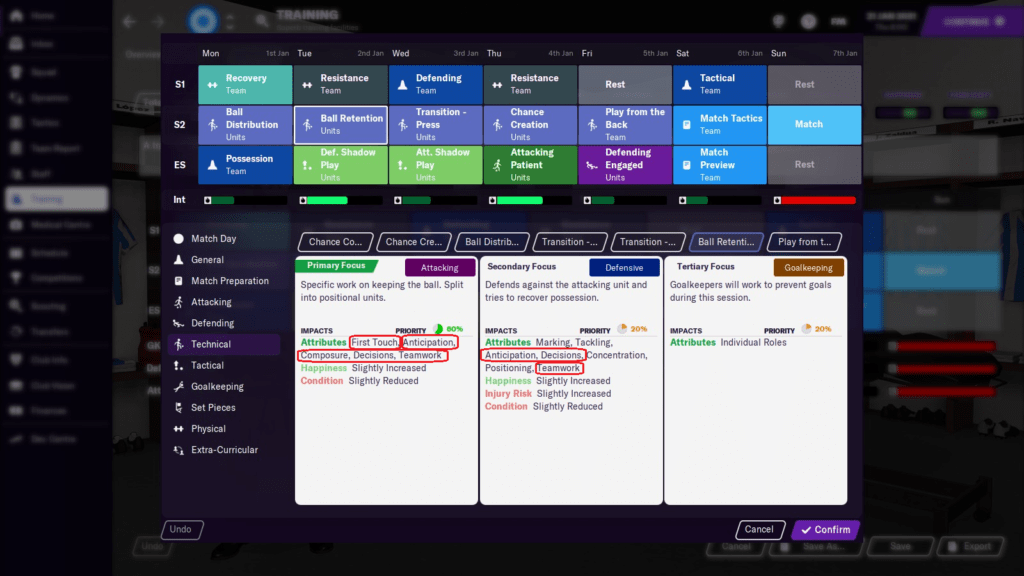

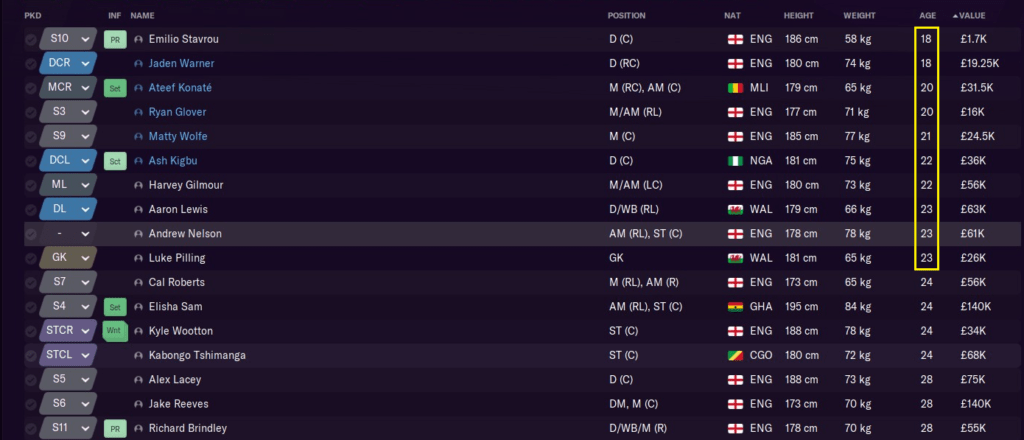
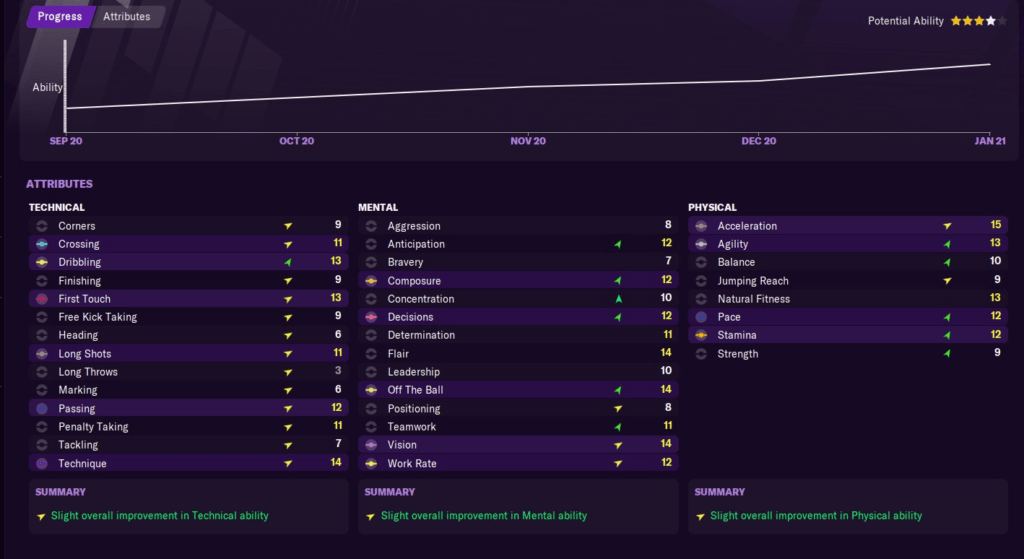
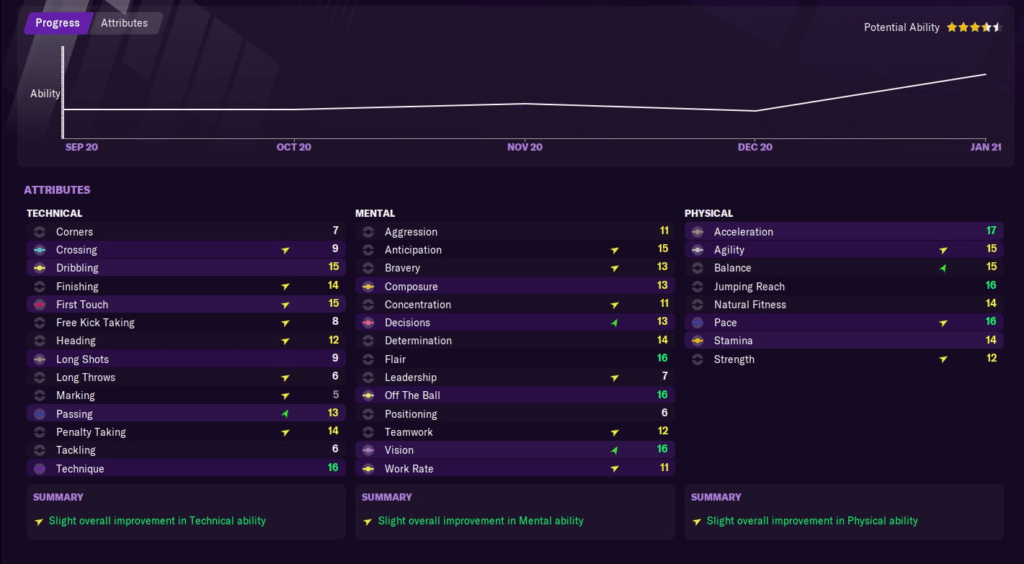
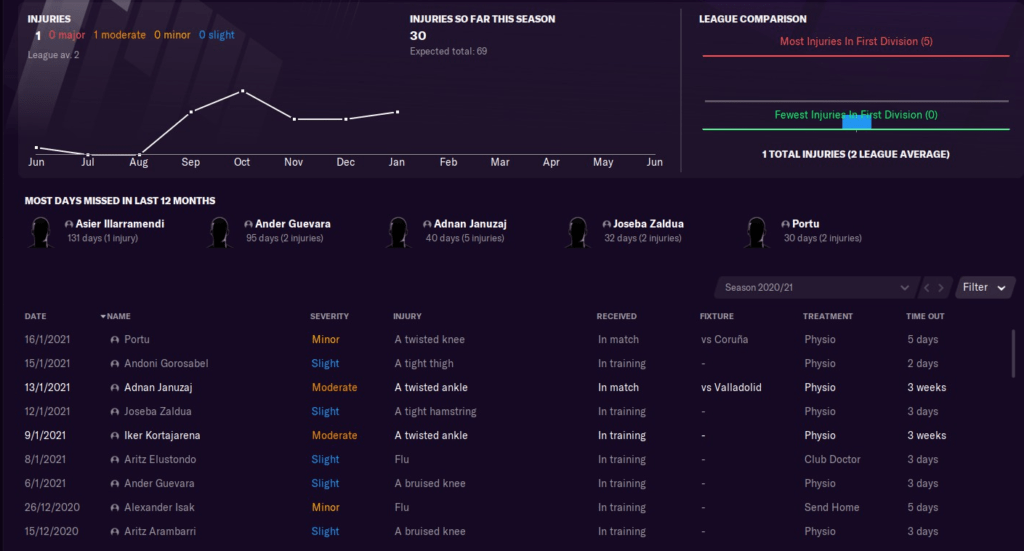
6 thoughts on “Non-League Legends: Total Football = Total Training”
Hola..
Cuando sigue esta historia…???
Hello..
When does this story continue … ???
Yes. Coming soon